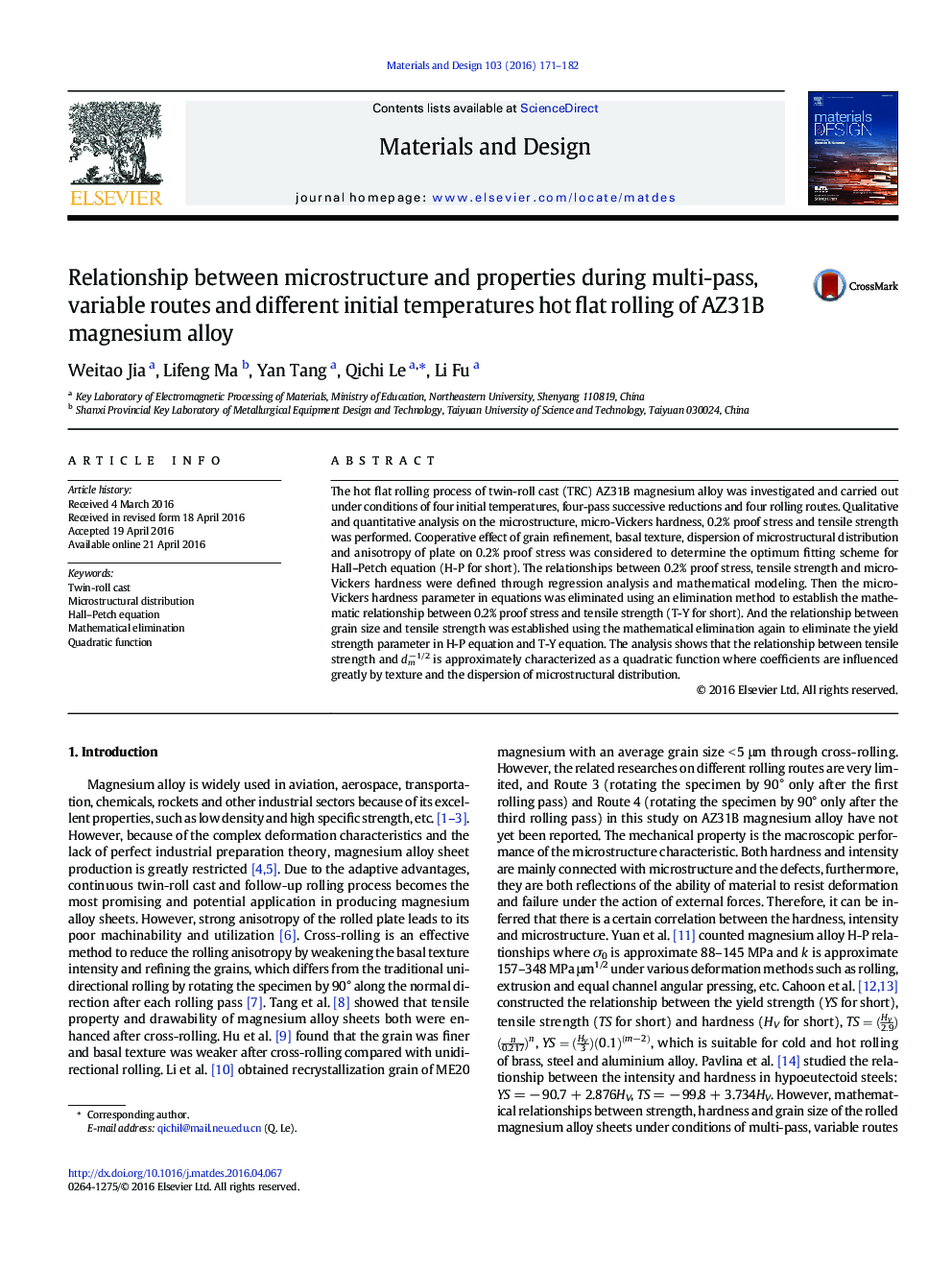| Article ID | Journal | Published Year | Pages | File Type |
|---|---|---|---|---|
| 828019 | Materials & Design | 2016 | 12 Pages |
•Macro-formability in each direction of the twin-roll cast AZ31B sheet was evaluated.•Rolling schedule with the capability of refining the grains and reducing the anisotropy effectively was proposed.•Relationships among tensile strength, yield strength, hardness, and grain size were modeled and successfully optimized.
The hot flat rolling process of twin-roll cast (TRC) AZ31B magnesium alloy was investigated and carried out under conditions of four initial temperatures, four-pass successive reductions and four rolling routes. Qualitative and quantitative analysis on the microstructure, micro-Vickers hardness, 0.2% proof stress and tensile strength was performed. Cooperative effect of grain refinement, basal texture, dispersion of microstructural distribution and anisotropy of plate on 0.2% proof stress was considered to determine the optimum fitting scheme for Hall–Petch equation (H-P for short). The relationships between 0.2% proof stress, tensile strength and micro-Vickers hardness were defined through regression analysis and mathematical modeling. Then the micro-Vickers hardness parameter in equations was eliminated using an elimination method to establish the mathematic relationship between 0.2% proof stress and tensile strength (T-Y for short). And the relationship between grain size and tensile strength was established using the mathematical elimination again to eliminate the yield strength parameter in H-P equation and T-Y equation. The analysis shows that the relationship between tensile strength and dm− 1/2 is approximately characterized as a quadratic function where coefficients are influenced greatly by texture and the dispersion of microstructural distribution.
Graphical abstractFigure optionsDownload full-size imageDownload as PowerPoint slide
